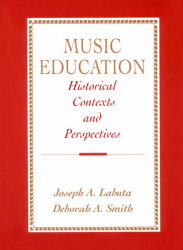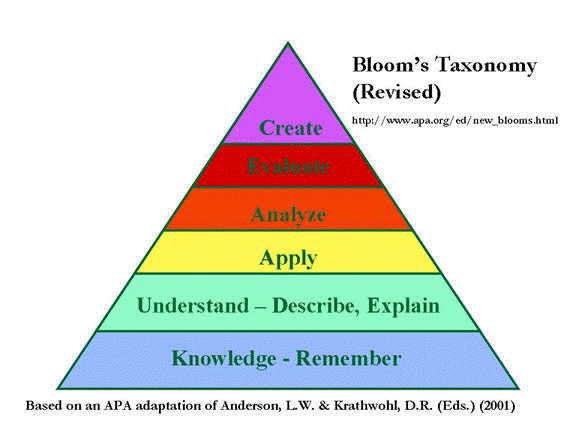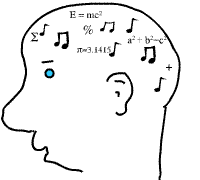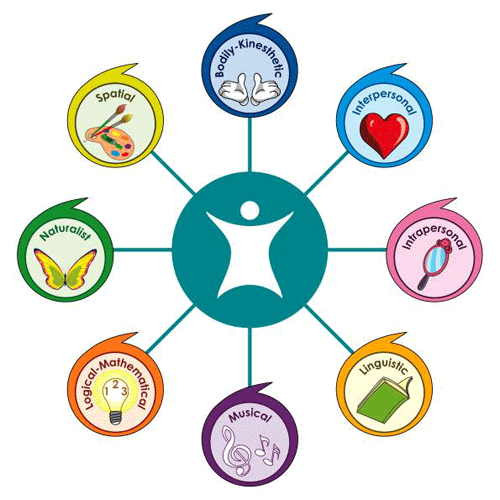
Teaching and Learning are inextricably linked. Some teachers have the philosophy that their job is only to present the information. What do you think? If learning has not taken place, have you taught?? There are many theories about how learning takes place. Be sure to read about them in Chapter 4!  
We are going to concentrate on a couple of concepts. First, Bloom's Taxonomy. You probably remember that from your education classes. The levels you see represent different levels of thinking 
Here is another way to look at it with a little more detail. BLOOM’S REVISED TAXONOMY Creating Generating new ideas, products, or ways of viewing things Designing, constructing, planning, producing, inventing.  EvaluatingJustifying a decision or course of action Checking, hypothesising, critiquing, experimenting, judging
AnalysingBreaking information into parts to explore understandings and relationships Comparing, organising, deconstructing, interrogating, finding 
ApplyingUsing information in another familiar situation Implementing, carrying out, using, executing  UnderstandingExplaining ideas or concepts Interpreting, summarising, paraphrasing, classifying, explaining 
RememberingRecalling information Recognising, listing, describing, retrieving, naming, finding |
Notice that 'Remembering' is at the bottom of the food chain and that 'Creating' is at the top. It is helpful to assess our classroom activities and categorize them. Are we concentrating too much on the lower levels? Take a look at this planning guide: Bloom's Revised Taxonomy Planning Framework One pitfall for music teachers is to consider 'exploring' to be 'creating.' You know what I mean, when we put an instrument in a student's hand, let him/her noodle around, and then call that 'improvisation.' A musician who is truly improvising, knows what the music will sound
like before he/she actually hears it.
Hmmmm. . . . . Creating, at least in this sense, is the highest level of thinking, so as we discuss this week, be sure to use 'creating' as a higher form than 'exploring.' Now let's look at another concept: Multiple Intelligences  Multiple intelligences is a theory developed by Howard Gardner. He said that intelligence based upon IQ tests was too limited and that there are actually 8 different kinds of intelligence that we all possess to various degrees. 
For an explanation of this theory, follow the link below. Here is an example of a good use of Wikipedia. There is a brief description of the theory and its parts. If you scroll down to the bottom, there is an excellent bibliography. Check it out: http://en.wikipedia.org/wiki/Theory_of_multiple_intelligences Now, take the test yourself
Here are some sources for the Multiple Intelligence Test:
https://mypersonality.info/basic-vs-pro/multiple-intelligences-test
http://www.literacynet.org/mi/assessment/findyourstrengths.html
https://www.edutopia.org/multiple-intelligences-assessment
Now, what if you were to combine Bloom's taxonomy with Multiple Intelligences and apply the two to your classroom. Here is a master chart called Blooming Smarts Master Planning Matrix This chart combines the different levels of thinking (Bloom's Revised Taxonomy) with the different kinds of intelligence (Multiple Intelligences). You can use this to plan activities that incorporate all levels of thinking and all kinds of intelligence. It will challenge your creativity, but just think of the ramifications of addressing the strengths of all of your students on every level! |